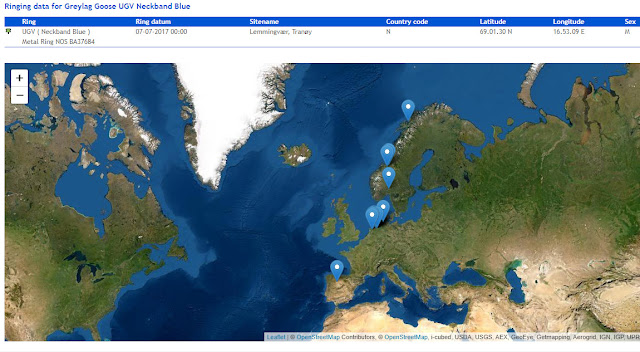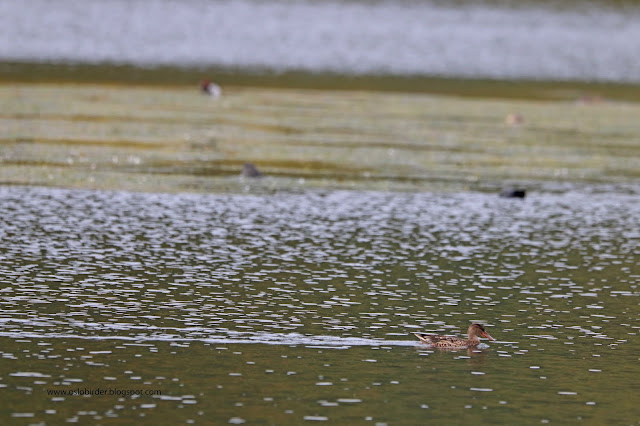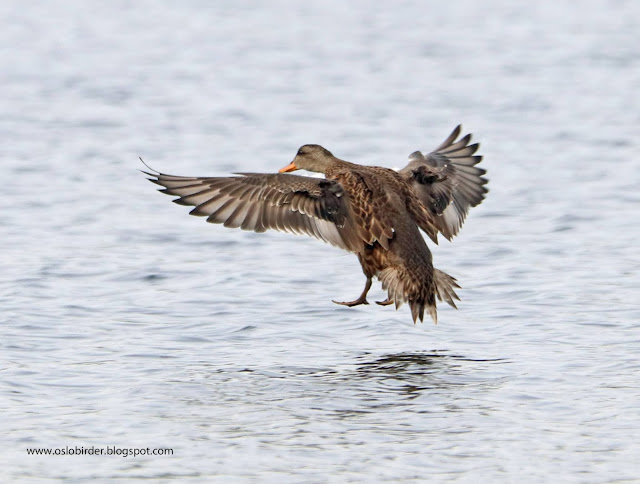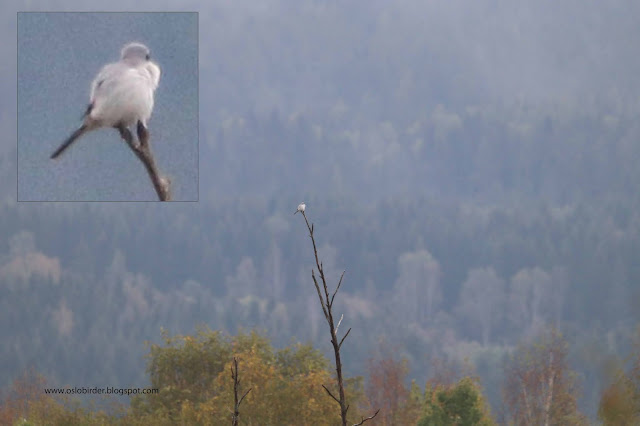In recent years a large flock of Greylag Geese has used Maridalen in the autumn, feeding on stubble fields and resting on the lake. I have always assumed that these are local birds that congregate here but a bird with a neck collar today showed that isn’t the case or at least not for all of them. The bird was ringed on 7 July 2017 in the north of Norway and has since been seen in the Netherlands and Spain as well as other sightings in Norway. So, this is a very exciting record especially as I never notice any obvious arrival of Greylag Geese from the north in the autumn.
The flock also contains 3 hybrid geese. They are
large birds and Canada x Greylag is the obvious parentage but they have dark
breasts like a Barnacle and there is something about their look suggesting a
farmyard goose.
A trip to Østensjøvannet today was productive with a
grand total of 7 Shoveler, the female Gadwall, the returning Wigeon x Mallard
hybrid and best of all a male Pochard which is a rare Oslo species and one that
is still to be seen in Maridalen.
 |
| Greylag Goose UGV (and not GVU which I first reported it as and which was a goose that was last seen in 2004...) |
 |
| www.geese.org is the place to report most neck collared geese and for your efforts you get a pdf with all the sightings as well as a map |
 |
| theese hybrid geese are a bit confusing as they have dark breasts and a generally very dark plumage |
 |
| here I think there is a farmyard goose jizz to the bird. Note also the white on the back of the neck of the right hand bird |
 |
| male Pochard (taffeland) |
 |
| and with one of the Shovelers (skjeand) |
 |
| Wigeon (brunnakke), Gadwall (snadderand) and 2 Shovelers |
 |
| The female Gadwall |
 |
| the returning Wigeon x Mallard hybrid |
 |
| one of two Black-throated Divers (storlom) still on Maridalsvannet. This one is now moulting into winter plumage |
 |
| a Common Buzzard (musvåk) and Goshawk (hønsehauk) in the skies over Maridalen. I am still waiting for a Rough-legged Buzzard this autumn |
 |
| Great Tit (kjøttmeis) helping herself to sunflower seeds |
 |
| a Reed Bunting (sivspurv) |








































































